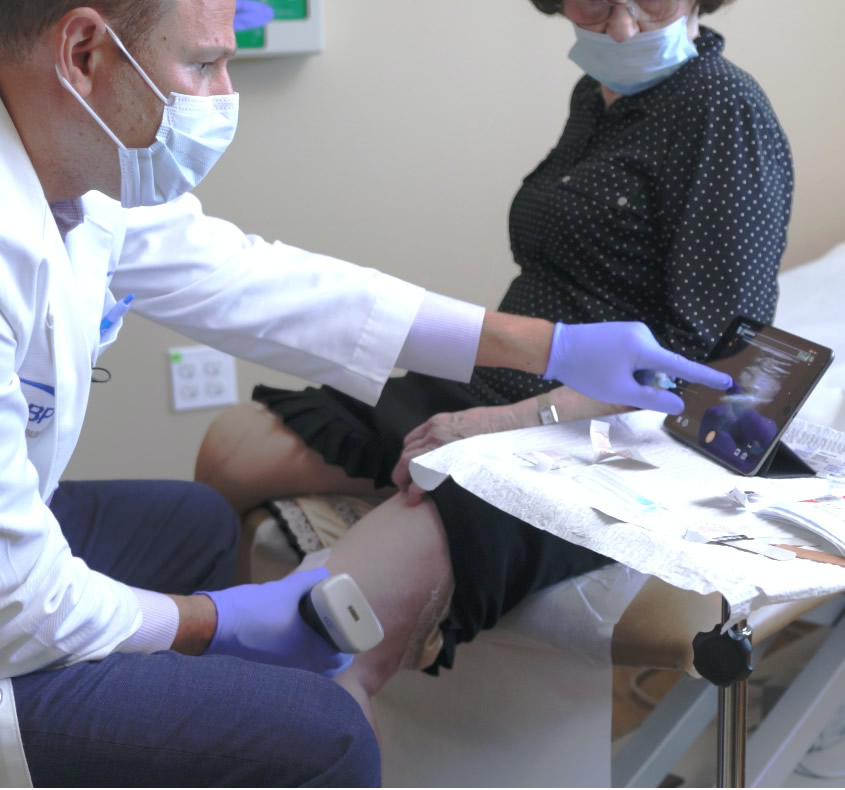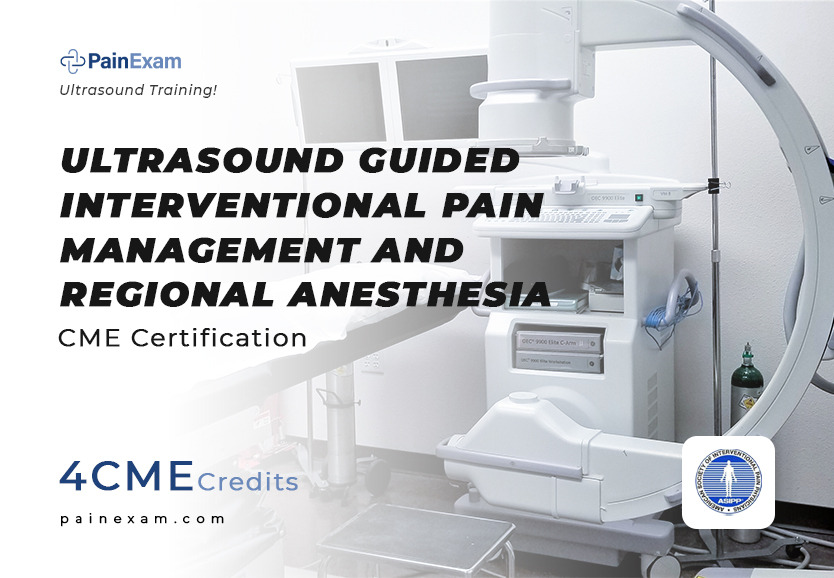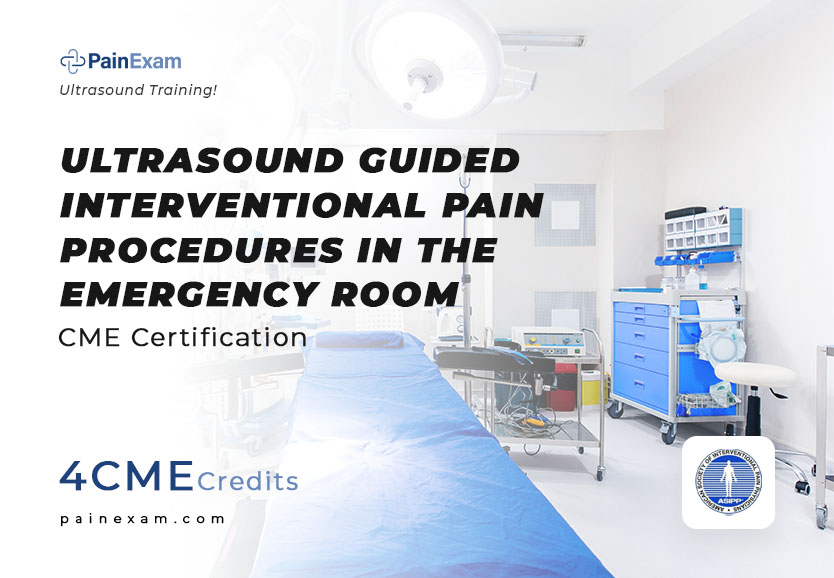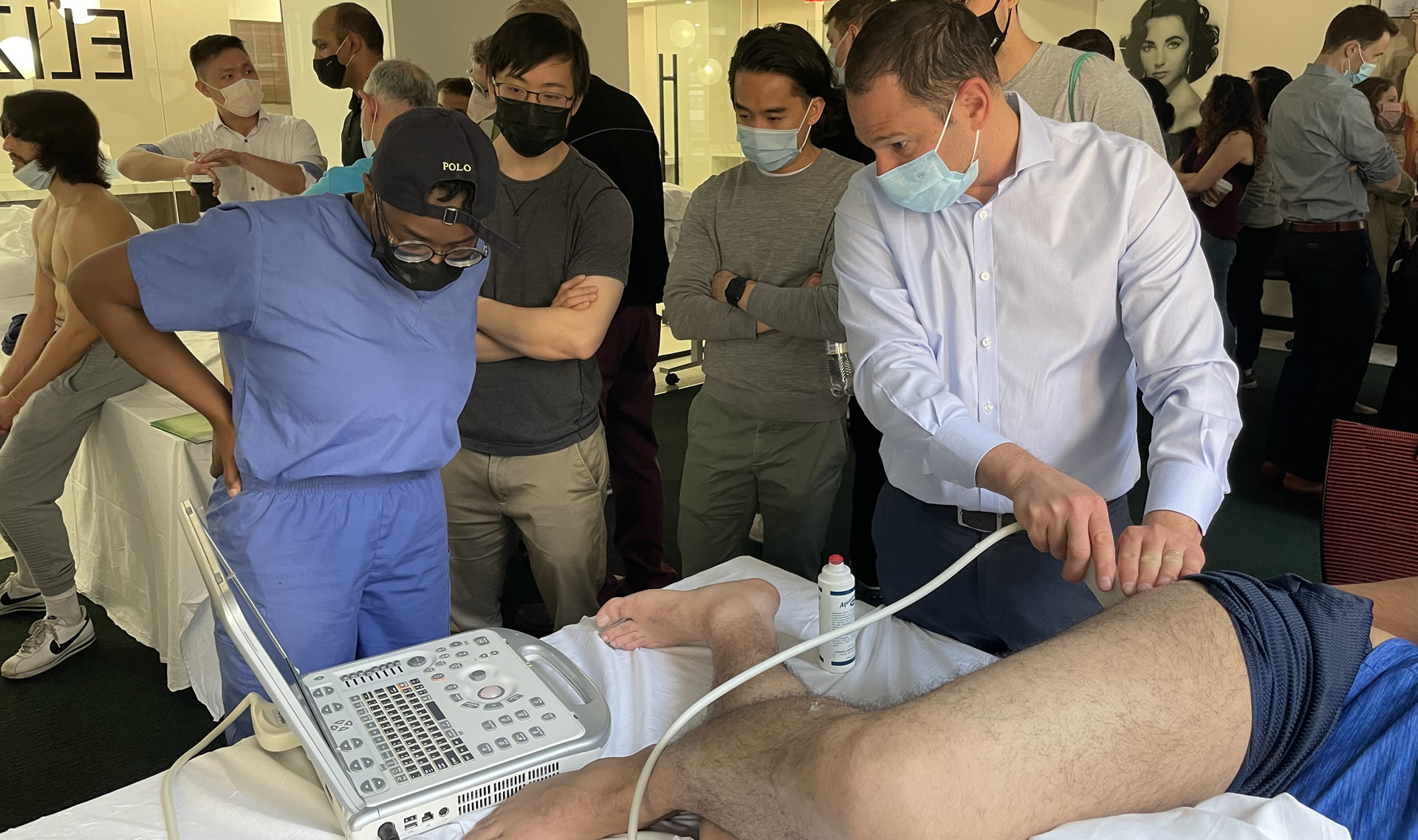Multi-Specialty Ultrasound Guided Injection CME Training Courses Now Available on PainExam
Ultrasound Guided Injection CME Training Courses for Anesthesiologists, Pain Practitioners, Emergency Medicine, and more!

Pain management is an important part of medical care, almost every medical specialty is faced with a patient who is reporting pain. Physicians with expertise in pain medicine are needed to help patients manage their pain and improve their quality of life. NRAP academy & PainExam.com are dedicated to providing medical professionals with the most up-to-date information about pain management and anesthesiology. As such, we’re proud to announce that multi-specialty Ultrasound-Guided Injection CME Training Courses are now available on PainExam.
This is a post about our new US guided injection courses, discussing how ultrasound-guided injections can help patients feel better by delivering injections with pinpoint accuracy, reducing a need for narcotic medications, and can even prevent surgery. The expert team at PainExam has developed advanced ultrasound guided CME training courses to teach physicians on using ultrasound guidance in the administration of regional anesthetics and analgesics, including epidurals, paravertebral blocks, facet joints, medial branch blocks, along with many other types of nerve blocks. Physicians from all medical specialties will find this training helpful as they’ll be able to offer their patients safe and effective injections and related treatments involving local anesthetic agents with overall better results and reduced side effects such as bruising, soreness, respiratory depression or cardiac complications.
Why ultrasound-guided injections are ideal for pain management?

Ultrasound guidance can be used to reduce the number of non-steroidal medications and narcotics used such as morphine. This also reduces the risks for respiratory depression, sedation, nausea/vomiting, or cardiac complications that may result from narcotic use.
Ultrasound-guided injections simply translates into injecting a local anesthetic into either muscle tissue (intramuscular) or blood vessels (venous). The injection is so accurate it enables the physician to be able to target nerves and pain sources with pinpoint accuracy, greatly reducing the side effects usually associated with a bad injection or oral medication regimens.
The use of ultrasound in anesthesia has greatly expanded since its initial development. Ultrasound can be used to identify anatomical structures, lymph nodes, and nerve roots that are difficult to palpate during surgery or procedures involving the injection of local anesthetics into areas with soft tissues.
A physician must have good knowledge about how needles work when they’re inserted inside tissue planes in order to determine which is the best approach for using pain medicine or anesthesia guided by ultrasound scan results.
The course at PainExam will provide physicians with all the information they need on this subject so you’ll feel confident practicing these techniques yourself!
Are Ultrasound-Guided Injections Painful?

The techniques used in ultrasound-guided injections cause no more discomfort than those given without the use of imaging. Ultrasound guidance is simply a method for pinpointing anatomical landmarks and avoiding injury to nearby nerves, blood vessels, muscles, or organs that may be located near pain sources.
Simply put Ultrasound-Guided injections are typically considered quicker and less painful than conventional injections.
Ultrasound-guided Injections for Pain Management

A physician with expertise in this area can also administer medications safely and accurately into deeper tissues (such as joints) where it’s difficult to reach by traditional means such as palpation alone.
A physician must have good knowledge of pharmacology and ultrasound imaging3 work when they’re inserted inside tissue planes in order to determine which is the best approach for using pain medicine guided by ultrasound scan results.
The techniques used in ultrasound-guided injections cause no more discomfort than those given without the use of imaging. Ultrasound guidance is simply a method for pinpointing anatomical landmarks and avoiding injury to nearby nerves, blood vessels, muscles, or organs that may be located near pain sources or treatment areas.
Why should emergency medicine doctors take our training?

Because it’s important for emergency medical professionals to treat patients’ acute injuries without exacerbating them. In emergency medicine, ultrasound-guided injections can help relieve pain from acute injuries without exacerbating them.
The course at PainExam focuses on the aspects of ultrasound-guided injections for pain management that are most important to emergency medicine doctors so you’ll be able to offer your patients safe and effective treatments involving local anesthetic agents with reduced side effects such as nausea, bruising, soreness, respiratory depression, or cardiac complications.
Ultrasound-guided injections for anesthesiologists

Anesthesiologists can effectively manage pain using ultrasound-guided injections.
Anesthesiologists have a number of options for nonopioid analgesics that they can use to manage patients’ acute and chronic pain safely and effectively. Ultrasound guidance has become an important part of these treatments because it enables better accuracy with reduced side effects such as nausea, bruising, soreness, respiratory depression, or cardiac complications.
The ultrasound guided injection training CME courses at PainExam focus on the many different aspects of ultrasound-guided injections most relevant to pain practitioners, anesthesiologists, and emergency medicine physicians. Once again, this will allow you to offer your patients safe and effective techniques involving anesthetic agents or pain medicine with reduced side effects such as bruising, nausea, soreness, respiratory depression, or cardiac complications.
Types of Nerve Blocks Included With US Guided Injection Training-
Upper Extremity Nerve Blocks-
– Axillary Nerve Block
– Brachial Plexus
– Infraclavicular Nerve Block
– Interscalene Nerve Block
– Median/Ulna/Radial Nerve Blocks
– Supraclavicular Block
– Stellate Ganglion Nerve Block
Lower Extremity Nerve Blocks-
– Ankle Block
– IPACK Block
– Femoral Nerve Block
– Genicular Nerve Block
– Fascia Block
– PENG Block
– Sciatic/Popliteal Nerve Block
Chest Wall Blocks-
– Erector Spinae Plane (ESP) Block
– Paravertebral Nerve Blocks
– Pecto-Intercostal Nerve Blocks
– PECS 1 & 2 Nerve Blocks
– Rhomboid Intercostal Plane Nerve Block
– Serratus Anterior Plane Nerve Block
– Transversus Thoracic Plane Nerve Block
Spine and Abdominal Nerve Blocks-
– Caudal
– Cervical Selective Nerve Root
– Epidural & Spinal Ultrasound
– Medial Branch
– Paravertebral Block
– Quadratus Lumborum Block
– Rectus Sheath Block
– Subcostal TAP Block
– TAP Block
Why PainExam’s Advanced Ultrasound Guided Injection Training?

It’s our pleasure to provide you with the most up-to-date information on various topics related to medicine and surgery.
We hope you find it helpful as we continue providing CME training courses online in order to help healthcare professionals improve patient outcomes worldwide, while reducing side effects linked to narcotic medications, saving lives along the way too.
These courses will teach you how to ensure successful results when performing these procedures so patients feel better faster! What are you waiting for? https://painexam.com/ultrasound-training/
About PainExam-

Online Pain Management Board Review for the ABA, ABPM, ASIPP and WIP FIPP MOCA and primary certification in pain management. 40 CME credits available for participation!
